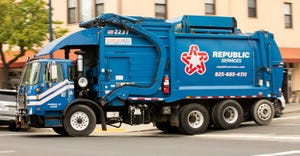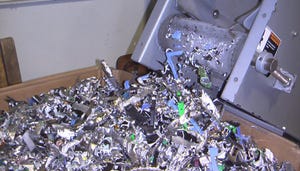A Sting Operation
December 1, 1999
Melanie A. Lasoff
Here's the buzz: At the closed Bailard Landfill, Oxnard, Calif., a maintenance worker discovered a small swarm of killer bees in a station that monitors landfill gas extraction.
The beehive was so heavy that the worker couldn't lift the lid off the monitoring station. Consequently, officials with the Ventura Regional Sanitation District - which oversee the landfill - and the agricultural commissioner's office were called in to help. The bees were destroyed, and DNA analysis confirmed that what were thought to be ordinary honeybees were members of a killer bee family that arrived in the United States from Africa in 1956.
What makes these bees killers? The African bees anger in three seconds as opposed to the 19 seconds of a European honeybee. And while European counterparts defend their turf up to 450 yards, killer bees will chase someone up to half a mile. Honey, that's pretty far.
Source: The Los Angeles Times
Space Waste More than the planets are orbiting in space today, according to the European Space Agency, Darmstadt, Germany. Approximately 8,000 pieces of trash at least 4 inches in diameter orbit the Earth. Approximately 150,000 pieces are at least a half-inch in size. About 41 percent of the spacey solid waste is from rocket explosions.
Despite their small size, space junk is traveling so fast that a 4-inch piece could destroy a space shuttle. In fact, the space shuttle Discovery made six maneuvers in the past year to avoid hitting garbage. Anyone ready to open a landfill in space?
Source: Associated Press
You May Also Like


